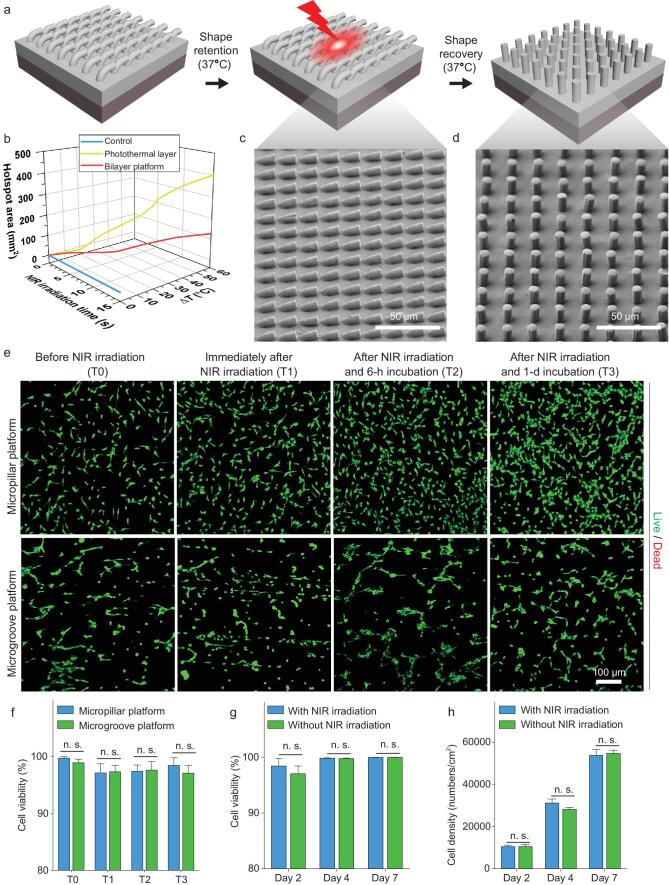Figure 2.
NIR-triggered topographical conversion of the bilayer platform. (a) A schematic illustration of the topographical alteration of the bilayer platform triggered by NIR irradiation. (b) Temperature increase (at center) and hotspot area (T > Ttrans) of neat PLLADLLA film (control), AuNRs-incorporated PLLADLLA film (photothermal layer) and bilayer platform irradiated by a NIR laser with a power of 5 W/cm2 at a distance of 3 cm over different time periods measured by infrared thermography, showing their distinct photothermal effects. (c) The topography of the temporary platform after immersion treatment at 37°C PBS for 24 h, demonstrating excellent retention of the temporary shape at the cell-culture condition. (d) The topography of the platform upon NIR irradiation, showing completely recovered micropillar array identical to its original state. (e) Representative fluorescence images showing the viability of HUVECs on the bilayer platform (with initially either micropillar topography or microgroove topography) before NIR irradiation (T0), immediately after 10-s NIR irradiation (T1), after NIR irradiation and the following 6-h incubation (T2), and after NIR irradiation and the following 1-d incubation (T3), demonstrating a negligible immediate influence of NIR irradiation on cell viability. (f) Statistical analyses of the viability of HUVECs on different platforms at specific time points (T0, T1, T2 and T3), showing that there is no statistically significant difference in the cell viability on the platforms with different original topographies. (g) Statistical analyses on the viability of HUVECs on the platforms with/without 10-s NIR irradiation within 7-d cell-culture periods, showing no statistically significant difference in the cell viability on different platforms. (h) Statistical analyses of the densities of HUVECs cultured on the bilayer platforms with/without 10-s NIR irradiation within 7-d cell-culture periods, showing that there is no statistically significant difference in the proliferation rates of HUVECs with/without NIR irradiation.

